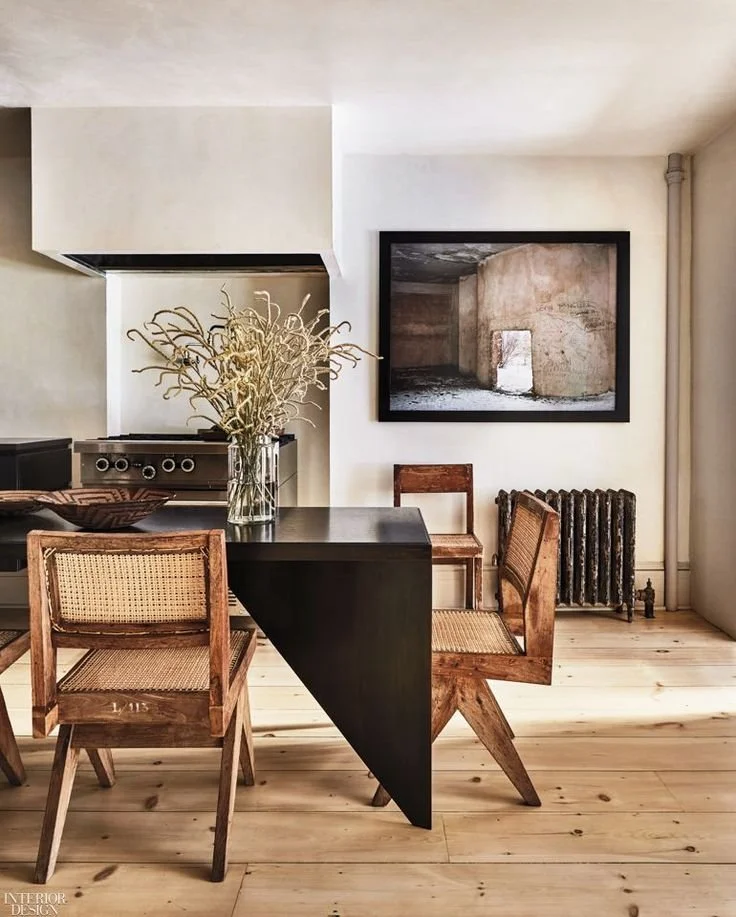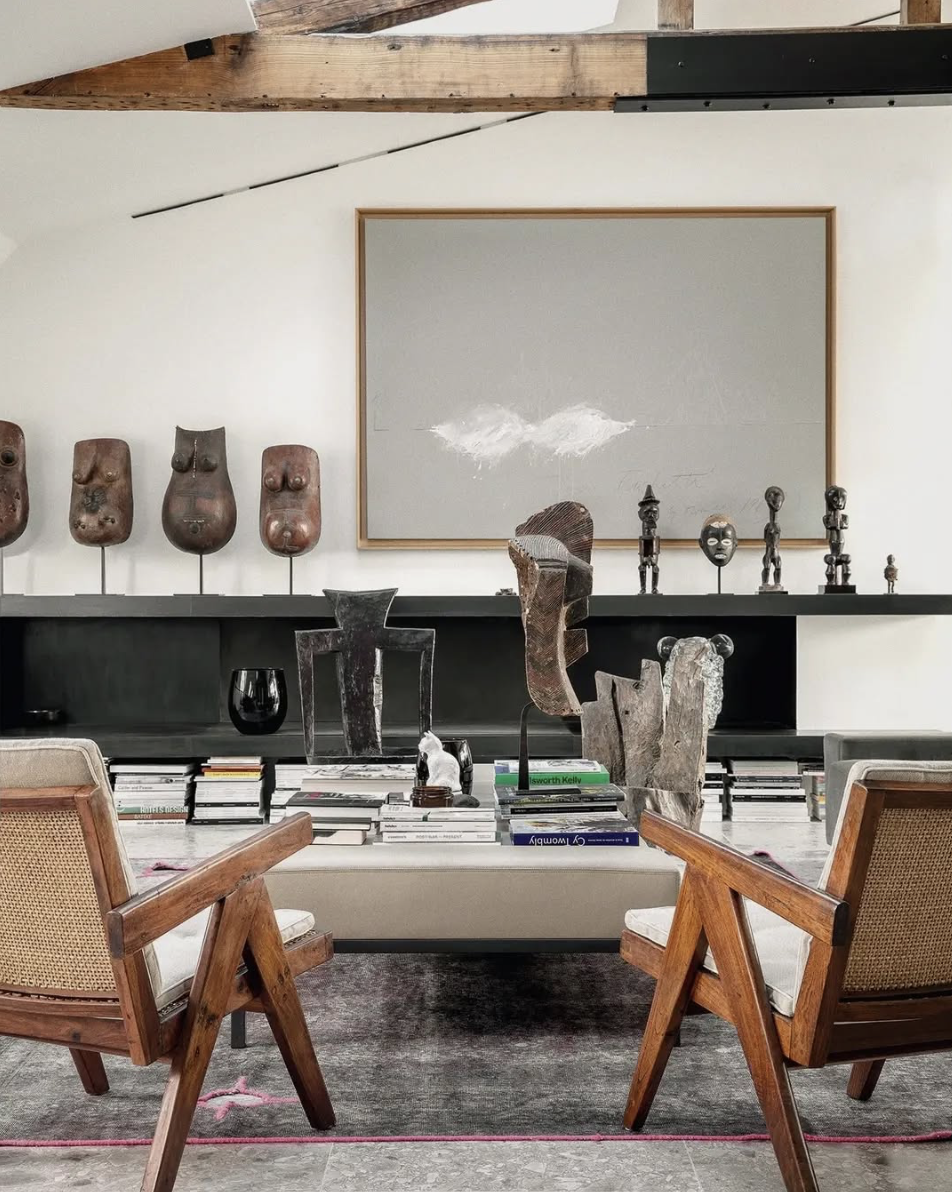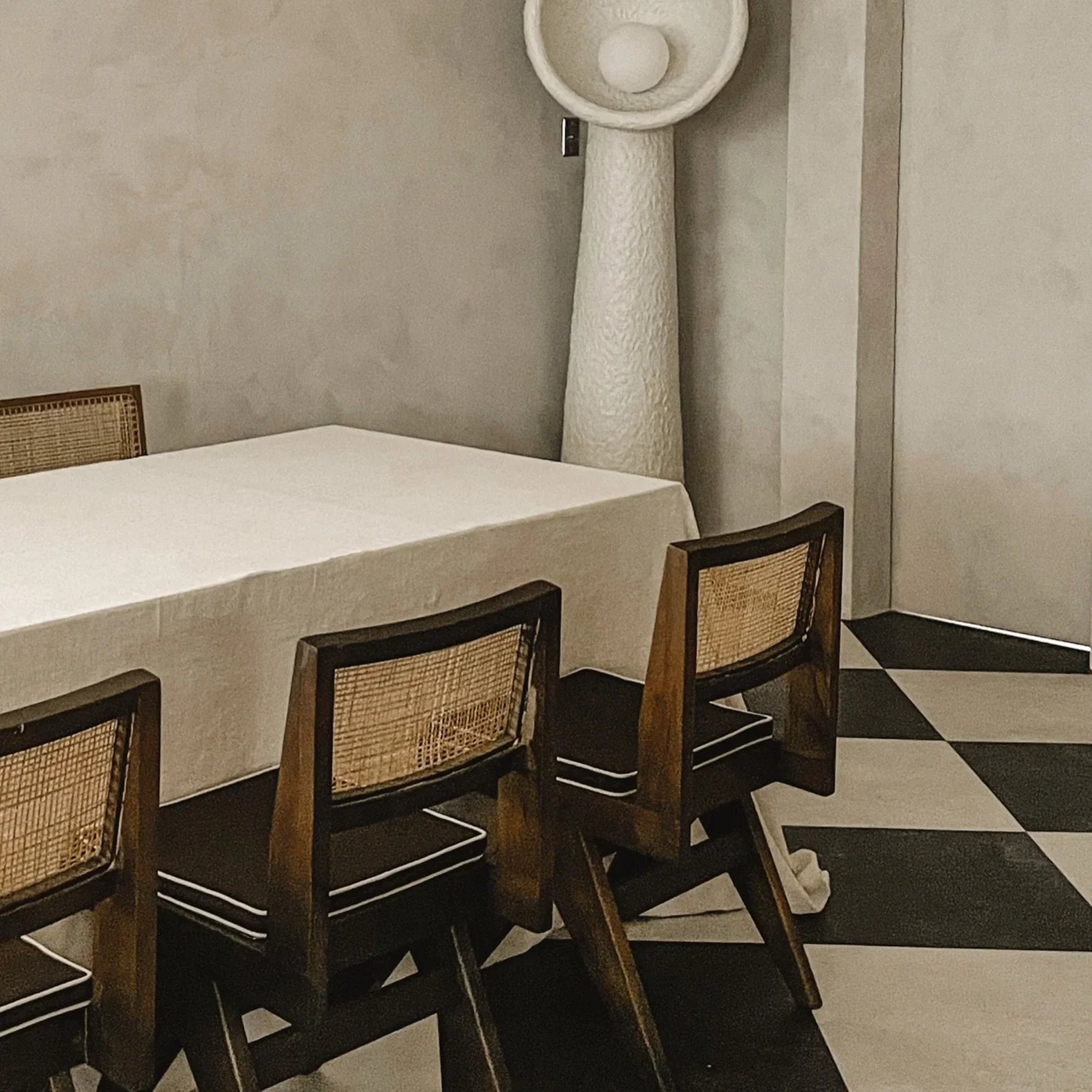Pierre Jeanneret
If his famed cousin and longtime colleague Charles-Édouard Jeanneret — better known and celebrated worldwide as Le Corbusier — was the visionary mastermind behind many groundbreaking architectural ideas, then Pierre Jeanneret was the pragmatic and dedicated member of the architecture and design team who made sure those visionary concepts were brought to life with precision and care. In recent years, Pierre Jeanneret has increasingly emerged from the long shadow cast by Le Corbusier, as collectors and historians have come to recognize and appreciate his simple yet striking chairs, benches, coffee tables, and other distinctive furniture creations that embody a unique blend of elegance and functionality.
Jeanneret studied at the prestigious École des Beaux-Arts in Geneva, and after graduating in 1921, he quickly became a trusted partner in Le Corbusier’s Paris office. Together, the cousins collaborated on numerous influential residential projects, most notably the Villa Savoye — the iconic modernist house perched in the suburbs of Paris, completed in 1931, which remains a milestone in the history of modern architecture. Pierre Jeanneret also joined forces with the renowned designer Charlotte Perriand to create the Grand Modèle line of tubular metal furnishings. This collection caused quite a sensation when it debuted at the annual Salon d’Automne design expo in 1929, showcasing innovative industrial materials and forms.
However, a rift developed between Pierre Jeanneret and his cousin during the turmoil of World War II. Pierre chose to join the French resistance, standing against the occupation, while Le Corbusier’s decisions to cooperate with the authorities under the Vichy regime introduced tension and distance between the two. As a result, they did not collaborate again until 1950, when Le Corbusier persuaded Pierre to contribute to the ambitious and visionary master plan for Chandigarh, the new city being developed in Punjab, India. Pierre Jeanneret went on to live and work in Chandigarh for the remainder of his life, deeply influencing the region’s architectural and urban landscape.A hallmark of Jeanneret’s furniture designs is his great sensitivity to materials. In contrast to the tubular-steel chairs produced by Marcel Breuer and other members of the Bauhaus, the chromed metal pieces designed by Jeanneret and Perriand — including such as the now-classic LC4 chaise longue and the Grand Confort lounge chair — have a sensuous, relaxed and welcoming look. Conversely, while Jeanneret uses essentially geometric forms for his wooden seating pieces, they exude warmth by nature of the material.
One of Jeanneret’s first manufactured designs in wood is the Model 92 Scissors chair, which was licensed by Hans and Florence Knoll during their tour of postwar France. However, it is in Chandigarh where Jeanneret produced his finest and most celebrated furniture work. These pieces have since earned him considerable recent renown for their design and craftsmanship. Crafted primarily from teak, the Chandigarh collection includes a variety of furniture such as low-slung lounge chairs and armchairs featuring cane seats, as well as desks and tables, many distinguished by Jeanneret’s signature drafting compass-shaped legs. Today, many of these items available on the market are refurbished, having originally been discovered by dealers in scrapyards across India during the late 1990s. Presently, Chandigarh is placing greater emphasis on preserving its modernist heritage, making original Jeanneret works increasingly rare and sought after.
George Nakashima
A master woodworker and M.I.T.-trained architect, George Nakashima was the leading light of the American Studio furniture movement. Along with Wharton Esherick, Sam Maloof and Wendell Castle, Nakashima was an artisan who disdained industrial methods and materials in favor of a personal, craft-based approach to the design of chairs, coffee tables and other pieces. What sets Nakashima apart is the poetic style of his work, his reverence for wood and the belief that his furniture could evince — as he put it in the title of his 1981 memoir — The Soul of a Tree.
Born in Spokane, Washington, to Japanese immigrants, Nakashima traveled widely after college, working and studying in Paris, Japan and India, and at every stop he absorbed both modernist and traditional design influences.
The turning point in Nakashima’s career development came in the United States in 1942, when he was placed in an internment camp for Asian-Americans in Idaho. There, Nakashima met a master woodcarver who tutored him in Japanese crafting techniques. A former employer won Nakashima’s release and brought him to bucolic New Hope, Pennsylvania, where Nakashima set up a studio and worked for the rest of his life. (Master craftsperson Mira Nakashima keeps her father’s legacy alive at the George Nakashima Studio in New Hope today. She has been the artistic director of George Nakashima Woodworkers since her father's death, in 1990.)
Nakashima’s singular aesthetic is best captured in his custom-made tables and benches — pieces that show off the grain, burls and whorls in a plank of wood. He left the “free edge,” or natural contour, of the slab un-planed, and reinforced fissures in the wood with “butterfly” joints.
Almost all Nakashima seating pieces have smooth, milled edges. Nakashima also contracted with large-scale manufacturers to produce carefully supervised editions of his designs. Knoll has offered his Straight chair — a modern take on the spindle-backed Windsor chair— since 1946; the now-defunct firm Widdicomb-Mueller, the result of a merger between Widdicomb and Mueller Furniture, issued the Shaker-inspired Origins collection in the 1950s.
Nelson Rockefeller in 1973 gave Nakashima his single largest commission: a 200-piece suite for his suburban New York estate. Today, Nakashima furniture is collected by both the staid and the fashionable: his work sits in the collections of the Philadelphia Museum of Art, New York’s Metropolitan Museum of Art and the Smithsonian Institution, as well as in the homes of Steven Spielberg, Brad Pitt, Diane von Furstenberg and the late Steve Jobs.



